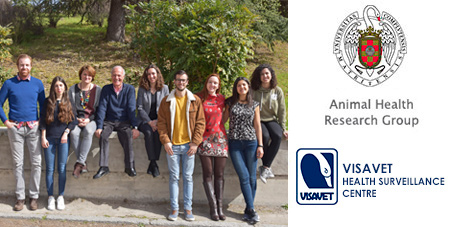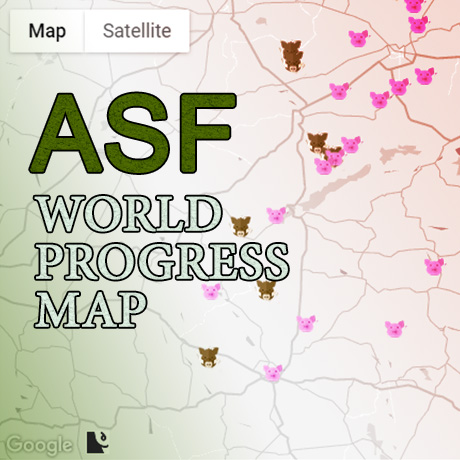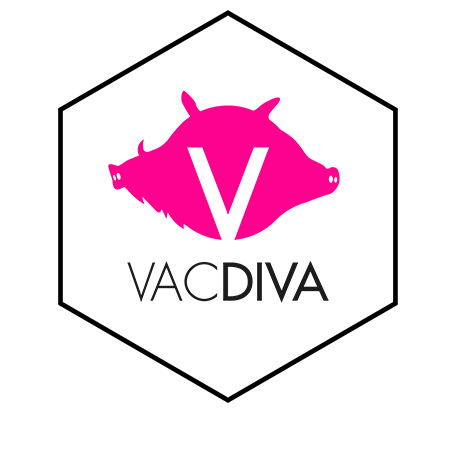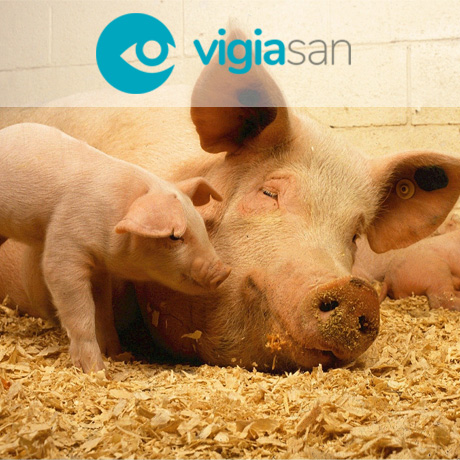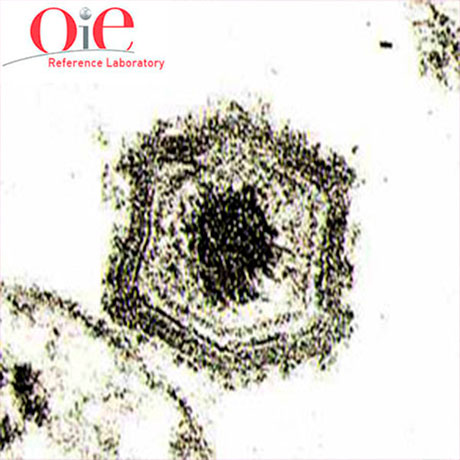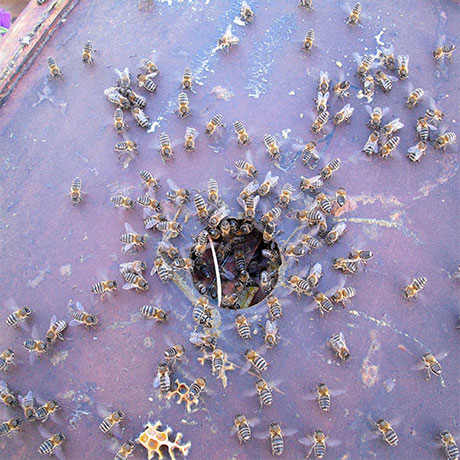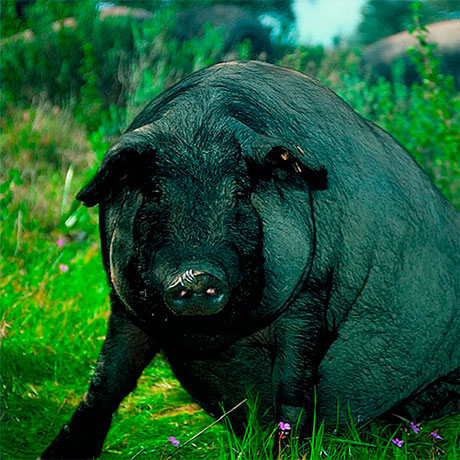Most of Spain declared free of serotype 8 of Bluetongue
Almudena Sánchez Matamoros & José Manuel Sánchez-Vizcaíno
November 14th, 2012. SUAT-UCM
On 14 November 2012, Spain has proceeded to declare itself free of serotype 8 of the bluetongue virus (BTV), except the region of Campo de Gibraltar (Cadiz). This action is performed according to Regulation 1266/2007 and Directive 2000/75/EC, after three years of absence of virus circulation of this serotype in Spain. The appropriate strategy for control and eradication of the disease from the entrance of this serotype in Spain in 2008 allowed control the BTV, declaring the last outbreak of serotype 8 in Spain (excluding the region of Campo de Gibraltar) in February 2009. Highlight that this region will expect that reach this status in 2013, as reported the last outbreak of serotype 8 in November 2010.
The restriction zones of Spain as of November 2012 are: Canary and Balearic Island are considered free of disease; Spain mainland would be considered restriction zone for serotype 1, four provinces in southern Spain also have this category for serotype 4 and the region of Campo de Gibraltar also includes serotype 8.

Fig. 6: Bluetongue restriction zones in Spain as of November 2012. Source: MAGRAMA, 2012.
This advance in the fight against BTV relaxes restrictions on exports of cattle, sheep and goats from Spain.
First outbreak of bluetongue virus in Spain in the period of vector activity 2012-2013
Almudena Sánchez Matamoros & José Manuel Sánchez-Vizcaíno
November 7th, 2012. SUAT-UCM
On November 6, the first outbreak of bluetongue virus of vector activity 2012 – 2013 has been declared on a bovine sentinel farm located in Malpartida de Plasencia (Caceres, Spain). Confirmation of disease has been carried out by the Central Veterinary Laboratory Algete indicating that this is an outbreak of serotype 1. This fact implies the recurrence of the disease in Spain in 2012 in a restricted zone of the disease, so that no restrictions are set on the animal movements.

Fig. 8: First outbreak of bluetongue virus in Spain in the new period of vector activity 2012-2013.
Source: Red de Alerta Sanitaria (MAGRAMA).
Evolution of Bluetongue in Spain 2011-2012
Almudena Sánchez Matamoros & José Manuel Sánchez-Vizcaíno
October 30th, 2012. SUAT-UCM
Evolution of Bluetongue in Spain in the period of vector activity of 2011-2012.
In the period of vector activity of 2011 - 2012 (October to March) have been reported twelve outbreaks of bluetongue (BTV) in Spain. The serotypes responsible of the outbreak have been the serotype 1 and 4, not finding any outbreak of serotype 8 in this period (the last outbreak in 2010) (Figure 7). Nine outbreaks of serotype 1 have been declared between October and January. These outbreaks have been detected in sentinel farms in the province of Caceres and on the border in the province of Salamanca, where outbreaks have been detected in the recent years. From this date has not shown the presence of further outbreaks of the disease. In addition, the serotype 4 was detected in March 2012 within the restriction zone for serotypes 1, 4 and 8 in the provinces of Huelva and Seville, highlighting its detection in wildlife.

Fig. 7: Bluetongue outbreaks in Spain in the period of vector activity of 2011-2012.
Source: Based on information from Spanish Ministry of Agriculture, Food and Environment MAGRAMA
In addition, this period was marked by the modification of the Order ARM/3373/2010 by the Order ARM/1614/2011. This Order established a model voluntary vaccination since July 31, 2011. Therefore, the important awareness of veterinarians and farmers of the benefits of vaccination as a control measure for the disease and their appropriate application has allowed to continue a favorable epidemiological evolution, decreasing the number of outbreaks in this period (table 2).

Edwige Nina Belliere PhD Thesis
 Cum laude for the Edwige Belliere Nina PhD Thesis: "Advances in cetaceans virology: molecular characterization of new sequences of Herpesvirus morbilllivirus" directed by Jose Manuel Sanchez-Vizcaino and Fernando Esperon.
Cum laude for the Edwige Belliere Nina PhD Thesis: "Advances in cetaceans virology: molecular characterization of new sequences of Herpesvirus morbilllivirus" directed by Jose Manuel Sanchez-Vizcaino and Fernando Esperon.

Second SBV wave
Víctor Rodríguez Prieto & José Manuel Sánchez-Vizcaíno
October 1st, 2012. SUAT-UCM
The second season of Schmallenberg disease has begun.
In the first epidemic wave Schmallenberg virus (SBV) infection affected eight countries in the European Union: Germany (December 2011), Netherlands (December 2011), Belgium (December 2011), United Kingdom (January 2012), France (January 2012), Italy(February 2012), Luxembourg (February 2012) and Spain (March 2012). Though the end of the season was declared to be at the end of May 2012, Denmark declared the first fetus affected by the SBV infection in June in the island of Funen (Figure 1, detail), while some weeks before antibodies against the virus were found in cattle in Jutland (Figure 1, detail). Moreover, the virus was detected in pools of midges of the genus Culicoides (species unknown yet) caught in October 2011, which means SBV has been circulating in very northern latitudes.
West Nile in Europe
Víctor Rodríguez Prieto & José Manuel Sánchez-Vizcaíno
September 17th, 2012. SUAT-UCM
Situation of West Nile in european environment in 2012.
In the European Union West Nile (WN) cases have only been reported during 2012 in equine in Greece and Croatia (Figure 1). Greece began suffering the disease in horses in 2010. Since then, at least 59 horses have been affected by the WN virus infection. As for Croatia, this is the first time that WN outbreaks are reported, having affected six horses. This is not surprisingly, given the active movement that the virus is having in recent years in the area (Figure 1). Although official data is not available yet, it is likely that lineage 2 is the responsible for the outbreaks in both countries.
Fig. 1. West Nile outbreaks in horses in Europe and the Mediterranean from 1999 to 2012.
The blue stars show the outbreaks reported during 2012 in Croatia and Greece
(Source: self elaboration with data from WAHID-OIE; last update September 17th, 2012).



